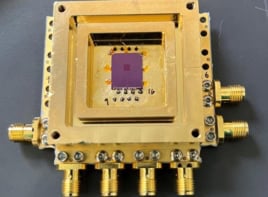The 2003 Nobel Prize in Physics has been shared by three theorists “for their pioneering contributions to the theory of superconductors and superfluidity”. Alexei Abrikosov of the Argonne National Laboratory in the US, Vitaly Ginzburg of the P N Lebedev Physical Institute in Moscow, and Anthony Leggett of the University of Illinois at Urbana have all made substantial contributions to a wide range of topics in theoretical physics over their careers. Abrikosov and Ginzburg are honoured for their work on so-called type-II superconductors, while Leggett is recognized for his work on the theory of superfluidity in helium-3.
At low temperatures most metals allow electric currents to flow without any resistance – a phenomenon known as superconductivity. However, metals stop being superconductors when they are placed in a strong enough magnetic field.
Type-I and type-II superconductors respond to magnetic fields in different ways. Type-I materials completely repel magnetic fields, whereas superconductivity and magnetism can co-exist in type-II materials, which means that they can remain superconducting in higher magnetic fields. This is a distinct advantage because many applications of superconductivity involve the production of magnetic fields – in magnetic resonance imaging (MRI) scanners and particle accelerators, for instance.
The theory of type-I superconductors was developed by Bardeen, Cooper and Schrieffer (BCS) in the 1950s and recognized with the 1972 Nobel prize for physics. In the 1950s Ginzburg developed a theory for type-I superconductors that was later extended by Abrikosov to explain the behaviour of the type-II materials.
Superfluidity – in which a fluid can flow without any viscosity – is another phenomenon that is only observed at temperatures near absolute zero. Superfluidity in helium-4 was discovered in the 1930s. However, it came as a complete surprise when superfluidity was observed in experiments in helium-3 in the early 1970s – a result that earned the 1996 Nobel prize for David Lee, Douglas Osheroff and Robert Richardson. Shortly afterwards Leggett provided an explanation by showing that the helium-3 atoms form pairs in the same way that electrons form Cooper pairs in the BCS theory of superconductivity.
Both Abrikosov and Ginzburg were born in Moscow, while Leggett was born in London. The prize, which is worth 10 million Swedish kroner, will be shared equally between the three.



